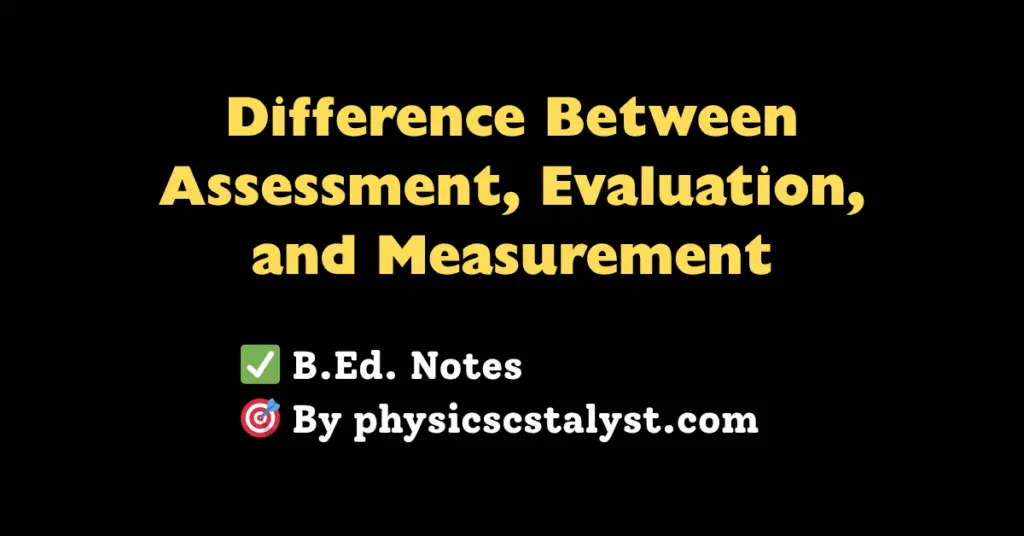Understanding the distinctions among assessment, evaluation, and measurement is essential for educators, especially for B.Ed. students preparing to shape effective teaching and learning processes. Though these terms are often used interchangeably, they represent different concepts with specific roles in education.
Measurement
Measurement is the process of quantifying a learner’s characteristics, abilities, or performance using numbers or scores. It involves assigning numerical values to specific traits, such as test scores or marks obtained in an exam.
- Nature: Objective and quantitative.
- Purpose: To provide data on “how much” or “how well” a student performs.
- Tools: Tests, quizzes, rating scales, or observation checklists.
Example: A student scoring 75 out of 100 on a physics test is a result of measurement.
Measurement gives clear numerical information but does not explain why or how a learner performed in a certain way.
Assessment
Assessment is a broader process that builds upon measurement. It involves collecting, analyzing, and interpreting data about a student’s learning to understand strengths, weaknesses, and progress.
- Nature: Both quantitative and qualitative.
- Purpose: To improve learning by providing feedback.
- Tools: Tests, assignments, projects, observations, portfolios, and class discussions.
Assessment is diagnostic and formative, focusing on the learning process as well as outcomes. It helps teachers modify instruction and helps students understand their learning journey.
Example: After a test, a teacher reviews the types of errors a student made to guide further teaching.
Evaluation
Evaluation is the most comprehensive process, which involves making judgments and decisions based on data gathered through measurement and assessment.
- Nature: Qualitative and quantitative.
- Purpose: To determine the effectiveness, value, or worth of a learning program, curriculum, or student achievement.
- Tools: All sources of measurement and assessment data.
Evaluation aims to address questions like “Is the educational program effective?” or “Has the student achieved the learning objectives?” It often results in summative judgments that influence decisions about grades, promotions, curriculum changes, or teaching strategies.
Example: An end-of-course evaluation determining the success of the teaching methods and student learning outcomes.
Key Differences Between Assessment, Evaluation, and Measurement at a Glance
| Aspect | Measurement | Assessment | Evaluation |
|---|---|---|---|
| Definition | Assigning numbers to traits | Interpreting and analyzing learning | Making judgments on effectiveness |
| Nature | Quantitative only | Quantitative and qualitative | Quantitative and qualitative |
| Focus | Product (scores/marks) | Process and product | Overall value/quality of learning |
| Purpose | To measure level of learning | To improve and guide learning | To make decisions and judgments |
| Timing | Typically a one-time event | Ongoing (formative or summative) | Periodic or final |
| Tools | Tests, scores, checklists | Tests, projects, portfolios, feedback | Combination of all data for judgment |
Conclusion
While measurement provides the raw numerical data, assessment interprets this data to inform and improve learning. Evaluation goes a step further by judging the overall worth of educational efforts and guiding important academic decisions. Understanding these differences enables B.Ed. students to better design, implement, and reflect on teaching and learning processes effectively.

